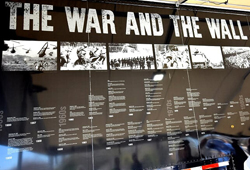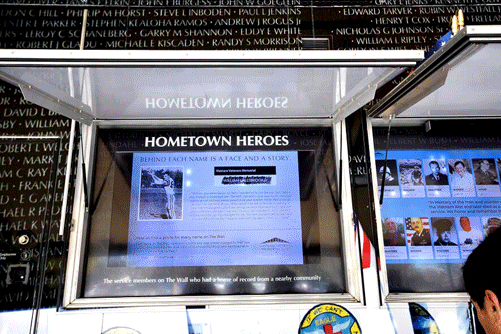My sincere thanks go to the city of Garland for making it possible for The Wall That Heals to come through our city. My husband and I volunteered at TWTH and it was one of the most rewarding service experiences we’ve ever had. And it was an honor.
Having the opportunity to shake the hands of the Viet Nam veterans that visited the wall was wonderful. Some shared stories as they came through the entrance, some shared feelings as they exited. Others, though, were emotional and deeply involved in the memories that the wall had brought to the surface.
Family members and friends who came to see their loved one’s name on TWTH followed the same pattern. There were some who wished to share their stories and some who were emotional because of the painful memories the wall invoked. Some visitors talked about their sadness. Most expressed pride over the heroism of their loved ones.
In addition to family and friends, many other folks who visited during my volunteer shift were simply there to honor the veterans. They didn’t have a friend or family member on the wall. They just wanted to show their gratitude for the courage and heroism of those who made the ultimate sacrifice.
With the emotional climate in the U.S. today, it was great to see that all these people could agree on one thing. That is that the service members who lost their lives in the Viet Nam war deserve this country’s deepest respect and gratitude. All agree that the treatment of the service members who were fortunate to make it home alive was shameful, an awful mark on this country’s record.
The sheer volume of names on the wall was astounding — 58,276 American service members’ lives were lost in the Viet Nam war. The three-quarter size replica of the Viet Nam Memorial in Washington D.C. is 375 feet in length and 10 feet tall at its highest point and filled with names.
The average age of the service members on the wall is 22 years and nine months. The youngest was 15-years-old, the oldest was 62. There were 40 sets of brothers on the wall and three sets of fathers and sons. It’s impossible for me to imagine the pain of these families.
The wall holds the names of eight women, all were nurses. The names of 16 chaplains are on the wall. There are still 1,500 service members missing in action.
In addition to the wall, there are several thought-provoking exhibits called the Mobile Education Center. The education center contains a photo slideshow of people who made it home from the war but later died because of the war’s effects, such as agent orange.
Another exhibit held some items that had been left at the wall in Washington D.C. There was a care package that parents had ready to send to their son when they were notified of his death. Another parent left a tiny sweater that her son had worn as a baby.
There were also exhibits that contained items worn by service members as well as information videos, letters that service members had sent home and letters they received from home.
The Viet Nam Veterans Fund is a 501c3 that build the wall in D.C. in 1982. TWTH is the only traveling wall that is affiliated with the Washington D.C. wall.
There was an area that included 330 flags, which represented each person from Dallas County who died in the Viet Nam war.
According to information from VVMF, 13 men from Garland died in the war.
For more information, visit https://www.vvmf.org/The-Wall-That-Heals/.




